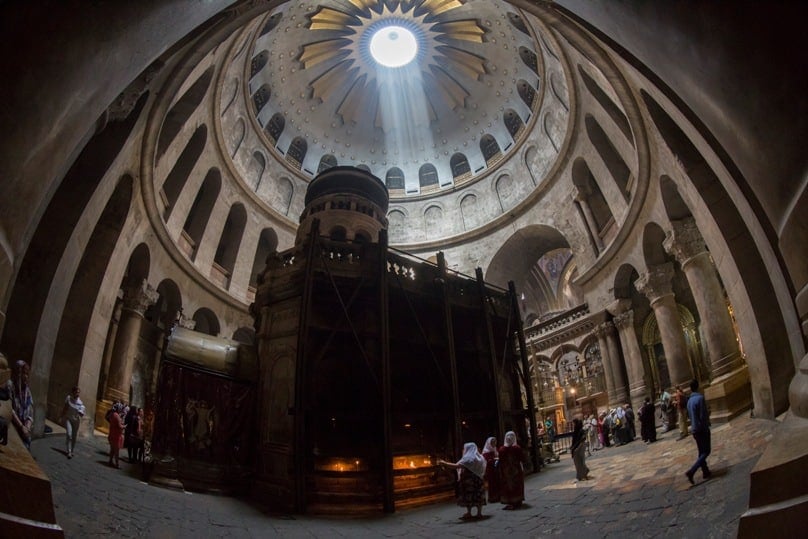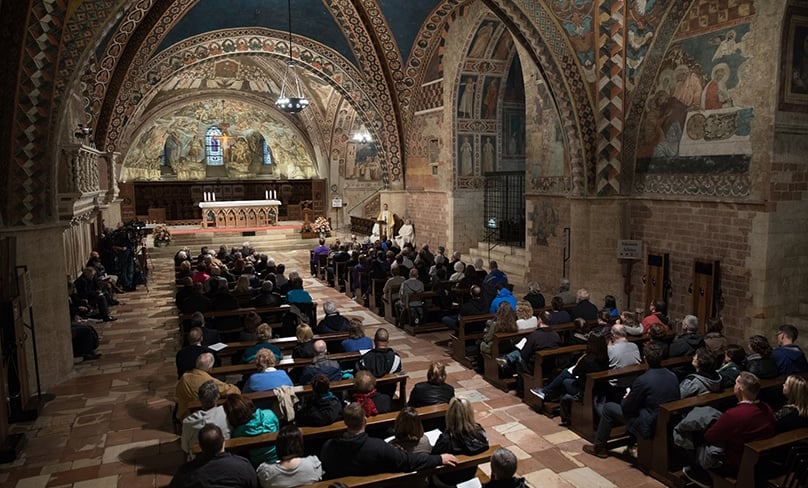
A few years ago, I completed doctoral studies on the appeal and impact of World Youth Day. Pilgrim responses to my research were insightful and at times surprising, none more so than when they were asked to identify their most rewarding experience.
I had not anticipated that many pilgrims, especially teenage boys, would name visits to historic churches in Italy.
It was apparent for these boys that the aesthetic appeal of the ancient places of our faith moved something deep in their hearts. This was especially true of Assisi.
One student pilgrim, John, said he was “blown away by Assisi” after having observed a procession there.
“Everyone was in a line following the statue, and they were singing the Ave Maria, in a different language, but everyone knew the main chorus,” he said.
“And they lifted their candles up in the air. It was a long line of candles in the night. It was just really moving.
“Even though I wanted to take pictures and stop, I found it disrespectful, so I didn’t, because it was just a very sacred moment.”
John was not alone in his thinking. Many of his peers associated the beauty of the candlelit procession in Assisi with a sense of the sacred.
The contemplation of beauty can stir a desire for God within the human heart, or it can be a moment of genuine connection with God.
In Evangelii Gaudium, Pope Francis reflected, “every expression of true beauty can thus be acknowledged as a path leading to an encounter with the Lord Jesus.”
There is true value in the “way of beauty.” We have all had encounters and experiences which we can describe as beautiful: an uplifting musical score, a work of art, the magnificence of God’s creation.
These moments work at different levels. For some, we marvel at human creativity and ingenuity. Others are sublime moments—simply breathtaking.
Each however has a common thread: it makes us feel good, it uplifts our spirits, and awakens within us an appreciation of what is good, true and beautiful.

These moments appeal to our aesthetic sense. Despite our differences we yearn for this sense to be stimulated and fulfilled.
The appreciation of beauty is not determined by the postcode of one’s residence or one’s social, religious, or cultural background. It is deeply innate to the human person.
This approach is not something new for the church, because throughout her history, art, music and literature have been central to both catechesis and evangelisation.
The search for what is good, true and beautiful, and the contemplation of these things, has inspired believers in every generation.
Ultimately, we know too, that today’s younger generations are no different, as the responses from my young pilgrims showed.
From time to time, however, we can sell people short and make poor judgements about them. A common mistake is that we consider that young people, especially boys, do not value their aesthetic sense.
Twenty years in the classroom has taught me that this is simply not true. Young men are not philistines, indifferent to the appeal and power of beauty. So, we must not deny them this in our engagement with them.
Taught with passion, young men can revel in their study of Shakespeare, classical music and the fine arts. Beauty moves them.
An appreciation of beauty should inform our approaches to art and architecture, catechesis and the liturgy. It must also underpin authentic Catholic education.
Human flourishing is not accidental. Rather, it must be nurtured through a consciousness that we were made for higher things. Beauty is central to this, for it ennobles us and brings profound joy to our lives.
Beauty can also redeem the culture of the world around us. In every age, humanity is beset by social, cultural and political problems. They are perennial, and at times overwhelming.
But we should not despair. For as the Russian novelist Fyodor Dostoevsky suggested, “beauty will save the world.”
The post Anthony Cleary: Young men need a beautiful faith too appeared first on The Catholic Weekly.


















